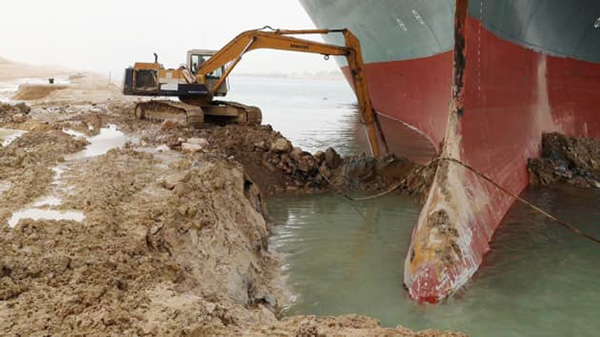Unanticipated events are a given, but organizations can build more agile and resilient supply chains with data-driven scenario planning.

By Ian Stone, CEO, Vuealta
After a year of supply chain disruptions, few businesses could have anticipated that 2021 would bring forth another highly disruptive, unpredictable event. That changed when Ever Given, one of the world’s largest container ships, ran aground in Egypt’s Suez Canal. Serving as a shipping lane, the Suez Canal is vital to global trade with an estimated $5.1 billion in daily westbound traffic and $4.5 billion in daily eastbound traffic. Trade could not continue as normal with a massive ship blocking the canal, creating significant delays for the many tankers lining up until the Ever Given was finally freed.
While no one expected the Suez Canal blockage, organizations would have been better equipped to withstand the aftermath had they created an agile and resilient network. However, most organizations have yet to do so in their hunt for efficiency. They have instead overoptimized their supply chains; they’ve cut here, reduced there and instigated Just-In-Time inventory policies. Simultaneously, supply chains have become stretched geographically and risks were heightened as organizations looked for ways to increase visibility into their disparate networks. They are fragile, vulnerable and more susceptible to the negative impacts of disruptive events, but now it’s time to make a decision.
Should other container ships change course and reroute around the Cape of Good Hope at the southern tip of Africa to avoid any further delays? Doing so would add up to two weeks to their journey, but those who already rerouted may be tempted to return to the Suez Canal now that the blockage is coming to an end. However, this would put them at the back of the line of the ships that remained. Whatever path they take, organizations must consider how their decision will affect their customers, goods, time and bottom line.
Customer loyalty is not guaranteed: COVID-19 tested the patience of many customers, but it was an event they personally experienced and could relate to – they understood that it was a difficult situation for all of us, including supply chains. The same may not be true for the Suez Canal blockage. If product shortages resume, or if new delays are created by recent events, customers may move on to other product brands that are more readily available.
Product waste is an important concern: With hundreds of vessels still stuck behind the Ever Given, there is a risk that perishable goods may spoil before arriving at their final destination.
Time is of the essence, but don’t forget about the expenses: With approximately 6,000 additional miles ahead for any ship that reroutes to the Cape, organizations can expect to invest in a lot more fuel. They will also have to pay staff for two additional weeks of work and may face new tariffs as their ships enter other locations.
Unanticipated events are inevitable and occur more frequently than most organizations may realize. These events also come with a number of question marks – while the canal has now reopened, no one really knew how long it would be before this happened, so deciding whether or not to reroute was a gamble.
This wouldn’t be a problem if organizations had the tools they needed to make effective decisions. The reality is that their data is siloed across multiple systems and technologies, making it difficult to process new information in real time. However, with data-driven scenario planning, businesses can ensure their supply chains don’t incur the same negative impacts that are expected of the Suez Canal blockage when future disruptions emerge. Data-driven scenario planning supports a great number of possible responses to expected or unexpected market changes by enabling people to quickly assess and evaluate feasible options and make the best decision for optimal response.
The disruptive effects caused by the Suez Canal blockage are expected to last for several more weeks as ports remain congested, creating additional delays for the delivery of goods all over the world. This situation sheds light on the quick decisions that logistics and supply chain firms must make in order to handle these and other disruptive events. From the impact to end customers to the additional costs incurred by re-routing, there are many things to consider when evaluating how disruptive events affect customer service, waste, time and cost. With data-driven scenario planning, businesses can build stronger, more agile and resilient supply chains that can seamlessly adapt to changing circumstances. A strategy of this caliber will instill new confidence in organizations, which will be empowered to take action instead of scrambling when the next unexpected event occurs.

About the Author
Ian is CEO of Vuealta, a Global Anaplan Partner dedicated to delivering powerful scenario planning and forecasting solutions for Supply Chain, Finance and Operations.
Contact: vuealta@brands2life.com
Scott Ellyson, CEO of East West Manufacturing, brings decades of global manufacturing and supply chain leadership to the conversation. In this episode, he shares practical insights on scaling operations, navigating complexity, and building resilient manufacturing networks in an increasingly connected world.